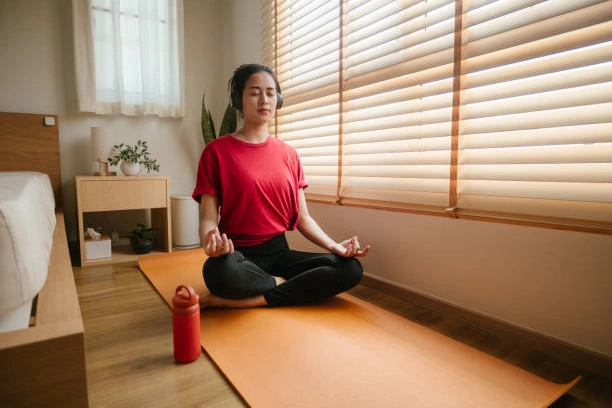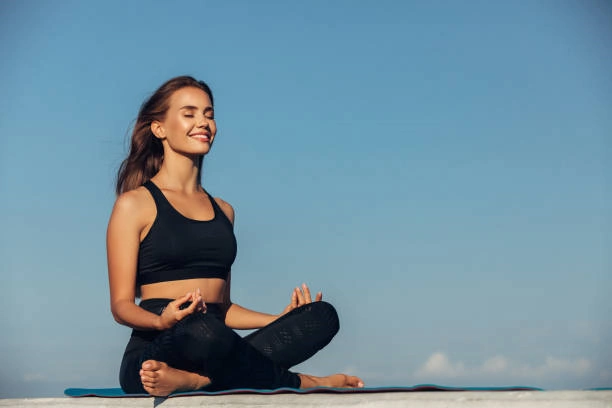Yoga and Meditation: Promoting Physical Health through Mindful Balance
In today’s fast-paced modern life, we often feel mentally and physically exhausted, with stress surrounding us. To find balance and inner peace, many have turned to ancient mind-body practices like yoga and meditation. These are not merely forms of exercise but a way of life that helps establish mental balance, ultimately promoting physical health.
1. Yoga: Harmonizing Body and Mind
Yoga originated in ancient India and has a history spanning thousands of years. It is not just about physical postures but also a philosophy and spiritual practice. Through yoga, we can exercise both our body and mind, achieving harmony between the two.
- Postures (Asanas): By practicing various poses, we can improve flexibility, strength, and balance. These postures not only help sculpt the body but also unblock energy channels, balance the body’s energy, and promote overall health.
- Breathing Exercises (Pranayama): Yoga emphasizes the importance of breath. Through deep and slow breathing exercises, we can regulate our heart rate, relax tense muscles, and gradually calm the mind.
- Meditation: Meditation is an integral part of yoga. It helps us become more aware of our inner world, understand our emotions and needs, and care for ourselves better.

2. Meditation: The Path to Inner Peace
Meditation is an ancient spiritual practice that originated in Buddhism and Hinduism. Through meditation, we can cultivate focus, observe the ebb and flow of our thoughts, and achieve inner calm and tranquility.
- Choose a Comfortable Meditation Posture: Whether sitting, lying down, or standing, choose a posture that feels comfortable. Keep the body upright and relax the muscles, especially in the shoulders and upper body.
- Focus on Breathing: Concentrate on your breath, paying attention to the sensation of inhaling and exhaling, particularly at the nose and chest. As you breathe in rhythm, allow your breath to gradually become deeper and slower.
- Observe Your Thoughts: During meditation, your thoughts may wander. Don’t try to suppress them. Instead, gently bring your attention back to your breathing. Over time, you’ll find yourself becoming more focused on the present.
- Persevere: Meditation requires time and patience to develop. At first, it may feel difficult or unfamiliar, but as long as you persist, you’ll find your inner world becoming increasingly peaceful and calm.

3. Benefits of Yoga and Meditation
- Stress Relief: Practicing yoga and meditation can effectively reduce stress and anxiety, allowing both body and mind to relax and recover. This is especially important in modern life, as prolonged stress can seriously harm physical and mental health.
- Improved Focus: Yoga and meditation help improve concentration. In busy work and study environments, we need to stay focused to complete tasks. These practices help control thoughts, reduce distractions, and minimize mental clutter.
- Better Sleep: Yoga and meditation help regulate your biological clock and sleep habits. Practicing them before bedtime can help relax the body and mind, improve sleep quality, and alleviate insomnia.
- Enhanced Immune System: Research shows that long-term yoga and meditation practices can strengthen the immune system. By regulating breathing and relaxing both the body and mind, these practices reduce stress responses and lower the risk of inflammation and infection.
- Increased Mental Resilience and Happiness: Yoga and meditation help cultivate a positive mindset and emotional resilience. By gaining a deeper understanding of our inner world, we can handle life’s challenges and difficulties with greater ease. This increased mental resilience and happiness improve our quality of life and work performance.

4. Integrating Yoga and Meditation into Daily Life
- Practice Daily: To build a consistent routine, set aside a specific time each day for yoga and meditation. This helps create discipline and raises self-awareness.
- Create a Peaceful Environment: To focus better and avoid distractions, choose a quiet and comfortable place for your practice. Ensure that the space is clean, cozy, and conducive to relaxation.
- Share with Others: Sharing your yoga and meditation experiences with friends, family, or colleagues can help them understand the benefits and encourage them to try. Joining a yoga or meditation group or class allows for connection with others and mutual encouragement.
- Continue Learning and Exploring: Deepen your knowledge of yoga and meditation by reading books, watching videos, or attending relevant courses. Continuous learning and exploration can help you discover new methods and techniques to enhance your practice.
- Combine with Other Healthy Habits: Integrate yoga and meditation with other healthy habits such as a balanced diet, moderate exercise, and other relaxation activities to achieve a holistic improvement in your mental and physical well-being.







